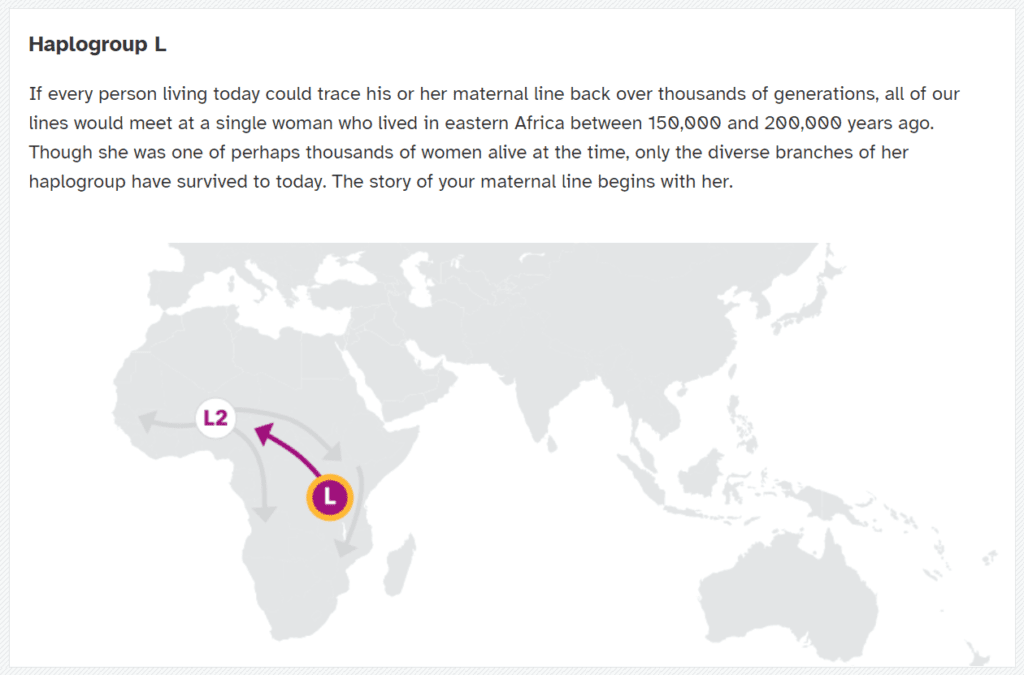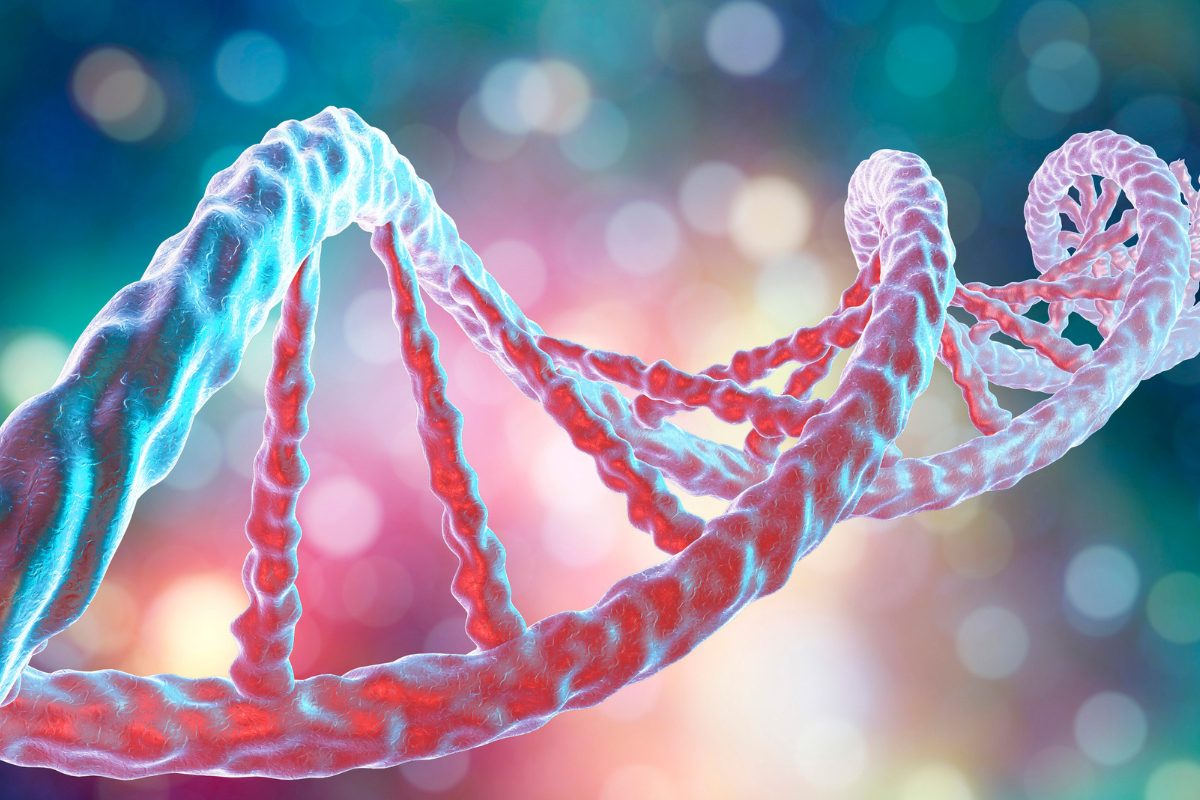I have a regular ancestral practice. I have an ancestor shrine, and I tend to it almost daily. When I’m in Florida, I visit my ancestors’ gravesites and regularly try to learn more about them. That’s why I recently took my third DNA test. This time, it was 23andMe.
Cuban roots
Cuban history shows me my indigenous, Spanish, and West African roots. Cuba has also seen other immigrants. For example, the Chinese came as indentured labourers in the 19th century, and Arabs, mostly Syrian, Lebanese, and Palestinian, migrated to the island from the late 19th to the early 20th century.
I don’t know much about my family’s history. My trail ends at my great-grandparents; I have their names and little else. I would love to know when my Spanish ancestors arrived in Cuba and where they came from. Were they among conquistadors, colonial settlers, or later immigrants? I don’t know.
Genographic DNA Ancestry Project
I took a DNA ancestry test for the first time in October 2008. National Geographic’s Genographic Project was a genetic anthropology study that mapped historical human migration patterns. I learned one thing, but it was significant; I belong to the mitochondrial DNA haplogroup L2.
L2 is believed to have evolved between 87,000 and 107,000 years ago, and it is a common lineage in Africa and widely distributed among African Americans. What fascinates me is that this haplogroup is not far removed from Mitochondrial Eve (L). My maternal ancestors didn’t migrate from the African continent and didn’t leave until they were enslaved.
Ancestry.com
In 2016, I took an autosomal DNA test by Ancestry.com. In the years following, I bought kits for my parents and sister.
Ancestry.com confirmed my DNA suspicions based on Cuban history. I’m 71% European (mainly Spanish), 16% (West) African, and 13% indigenous (primarily Cuban).
Not surprisingly, my parents and sister have a similar distribution, just a little more of this here and a little more of that there. For instance, my mother has the most significant African percentage (20%), and my father has the greatest European (74%) and indigenous (16%).
I have learned a lot from Ancestry.com, from the DNA results and their extensive databases. I found records relating to my maternal grandfather and his grave through Ancestry.com records.
23andMe
In Australia, 23andMe offers only the Ancestry + Traits Service. This kit includes Ancestry Reports, Family Tree, DNA Relative Finder, and Trait reports. I waited until I was in the US so I could buy the Health + Ancestry Service. This kit adds Health Predisposition reports, Carrier Status reports, Wellness reports, and a Family Health History Tree.
Like Ancestry.com, membership to 23andMe offers more features. I am not subscribed to either now, but I subscribe to Ancestry.com for a month every few years to see if I can find new information in its databases.
Ancestry Composition
My general ancestry results on 23andMe are almost identical to those of Ancestry.com: 71% European, 17% African, and 12% indigenous. However, the composition is different. 23andMe lumps regions together and displays more trace ancestry.
Ancestry.com’s results say Spain 39%, Portugal 11%, and Basque 9%. 23andMe’s results state Southern European: Spanish & Portuguese 56.8%, Italian 9.1%, and the vague Broadly Southern European 2.4%.
One small but meaningful discovery is that the strongest evidence of my ancestry is in Andalusia. For a few years, I have thought that my Spanish ancestors came from Andalusia, where my unusual surname is found more than anywhere else.
The European composition includes 0.6% Northwestern European (Scandinavian and Finnish), 0.5% Ashkenazi Jewish, and 0.7% Broadly European.
The African composition is much more diverse in the 23andMe results than Ancestry.com, but also too much to be helpful. It includes every country on the African continent plus Broadly Western Asian & North African (from Morocco to Egypt and the whole region from Georgia and Turkey down to Yemen and Oman).
These small amounts of DNA reflect the wide range of human migration and the history of Spain. Muslims ruled the Iberian Peninsula for nearly 800 years, and Vikings raided the coasts in the 9th and 10th centuries. Although these results don’t shed new light on my more recent ancestors, they remain fascinating.
One final surprise is 0.4% Trace Ancestry: Broadly Central Asian, Northern Indian & Pakistani. Again, this is a vast area from Kazakhstan down to Northern India and across to Bangladesh and Bhutan. The smaller the percentage, the smaller the chance your DNA comes from a region. I tend to ignore trace amounts until I can find more evidence.
Maternal Haplogroup

Ancestry.com doesn’t include haplogroups, but 23andMe does and offers more information than National Geographic’s Genographic Project. I belong to the maternal haplogroup L2b2, which traces back to a woman who lived less than 21,000 years ago. That’s nearly 840 generations ago!
Neanderthal Ancestry
I inherited a small amount of DNA from my Neanderthal ancestors, less than 2%. The report highlights associations between my Neanderthal variants and your traits, such as being less likely to have a fear of heights and eating leafy greens less frequently, which are both true for me.
Health Reports
Genetics may influence our chances of developing certain diseases, but so can lifestyle and other factors. 23andMe does not provide an exhaustive examination of your DNA, but its many reports can offer insights, and you can even print them to show your doctor.
Health Predisposition
40 Health Predisposition reports cover conditions including BRCA1/BRCA2, Celiac Disease, Chronic Kidney Disease, Coronary Artery Disease, Diabetes, High Blood Pressure, Irritable Bowel Syndrome, Late-Onset Alzheimer’s Disease, Parkinson’s Disease, Skin Cancer, and more.
I can’t speak to the accuracy of all the reports because I don’t live with serious health conditions. My reports mostly show that a variant was not detected, or I have a typical (average) likelihood of developing a disease. I have an increased likelihood of Migraines and Psoriasis, which are both true.
Pharmacogenetics
This report shows how your DNA may influence your body’s ability to process some medications. Mine are all normal except for Clopidogrel (Plavix®), primarily used to prevent harmful blood clots and less likely to be effective for me.
Carrier Status
Carrier Status reports reveal variants that could affect your children’s health. There are 45 reports for conditions such as Canavan Disease, Cystic Fibrosis, Deafness, Muscular Dystrophy, Sickle Cell Anemia, and Tay-Sachs Disease. I do not have any variants that 23andMe tested for these conditions.
Traits
There are 34 Traits reports. These include cheek dimples, earlobe types, and whether you like cilantro. These are amusing and not all correct in my case, but here are some of the right ones:
- Eye Colour – Likely brown or hazel eyes
- Fear of Public Speaking – Less likely to have a fear of public speaking
- Light or dark hair – Likely dark
- Mosquito Bite Frequency – Likely bitten more often than others
- Skin Pigmentation – Lightly lighter skin
Wellness
There are 11 Wellness reports on pet allergies, sleep, caffeine consumption, etc. Again, I’m not sure how correct these all are, but it got some right:
- Alcohol Flush Reaction – Unlikely to flush
- Caffeine Consumption – Likely to consume less
- Deep Sleep – Less likely to be a deep sleeper
- Nearsightedness – Typical likelihood (I had laser vision correction 20 years ago)
Other health features
In Blood & Biomarkers, 23andMe lets you add your blood work to gain more health insights. Health Communities provides information about common health conditions that affect 23andMe customers.

Like Ancestry.com, 23andMe allows you to create a family tree and connect with DNA relatives, but its health research side is far more robust. It’s the only company that offers genetic health risk reports approved by the Food and Drug Administration (FDA).
As with all direct-to-consumer genetic testing, there are concerns about accuracy, informed consent, and privacy. Be sure to do a little research and read the fine print. I recommend listening to tech journalist Kara Swisher’s podcast interview with 23andMe CEO Anne Wojcicki, What Is 23andMe Doing With Your DNA?
Lastly, I admit that I was focused on the ancestry results and unprepared for the health reports. In 2019, journalist Dorothy Pomerantz said she was devastated when her 23andMe health results showed she has BRCA1, a genetic mutation that increases the risk of breast and ovarian cancers. 23andMe isn’t going to call you to break the news gently, so it might be a good idea to have a friend around when you read your results. Thankfully, I did not receive any bad news.

